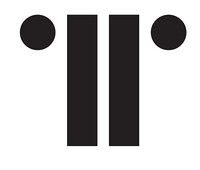May 18–August 29, 2021
Old College
University of Edinburgh
Edinburgh EH8 9YL
UK
Hours: Tuesday–Saturday 10am–5pm
T +44 131 650 2210
info.talbotrice@ed.ac.uk
It is with great pleasure that we announce the re-opening of Talbot Rice Gallery with The Normal, featuring artists Larry Achiampong, Amy Balkin, Anca Benera and Arnold Estefan, Boyle Family, Alexandra Daisy Ginsberg & Sascha Pohflepp, Gabrielle Goliath, Femke Herregraven, Jarsdell Solutions Ltd, Kahlil Joseph, Tonya McMullan, Sarah Rose, and James Webb.
Curated in real time, it explores ideas about pausing the train of progress, resurgent communities, an ever-increasing proximity between humans and wildlife and the asymmetrical effects of this pandemic due to socioeconomic and racial inequality.
In This song is for…, Gabrielle Goliath returns to and re-performs the popular convention of the dedication song, in collaboration with a group of women- and genderqueer-led musical ensembles. Each song has been chosen by a survivor of rape and performed as a newly produced cover version, with a sonic disruption introduced and performed at a point within each song—a painful entanglement of the lived experience of trauma with personal and political claims to life, dignity, hope, faith, even joy. In a year parsed through media, screens and reporting, filmmaker and video artist Kahlil Joseph presents BLKNWS (2018–ongoing), an evolving news-style broadcast that montages art, music, memes and news desk reporting to present African-American experiences and Black culture. More than an artwork, this enterprise works against systemic racism by pushing back against negative mainstream and media bias. Updating throughout the show, its unique news desk features and stories bear witness to our changing world and promise to capture our ever changing political landscape.
Also looking to global consequences, Anca Benera and Arnold Estefan’s new commission explores the negotiations over the “commonwealth” of vast deep-sea mineral deposits and their proximity to deep-sea vents: scientifically associated with the origins of life and the extreme enzyme currently used to test for COVID-19. Concerned with places that are slipping into the sea, Amy Balkin’s A People’s Archive of Sinking and Melting (2012–ongoing) is a global collaborative archive of items contributed from places that may disappear owing to the combined physical, political, and economic impacts of climate change, including glacial melting, sea level rise, coastal erosion and desertification. Throughout the exhibition and until the conclusion of COP26 in Glasgow this year we will contribute to its development by inviting contributions from places in Scotland.
Reflecting on the quietening that settled over many cities around the world at the height of lockdowns, Tonya McMullan began collecting honey produced by urban beekeepers all over the city of Edinburgh as wild flowers bloomed and manicured areas spontaneously rewilded. Her resultant sculptural archive has been analysed by scientists—revealing the kinds of pollen the bees have foraged—which spread as images across the gallery. The return of bird song to empty cities was another startling feature of lockdowns and, in the Royal Botanic Garden Edinburgh, unsuspecting passers-by may pause upon hearing the bird song that James Webb has imported, destabilising our sense of location and familiarity, and sharpening our senses towards the environment.
Pathways through nature and pathways through crowds have become global obsessions as we design socially distanced routes and safe passages. Images by Boyle Family, made in the 1970s with then-cutting-edge technology, build up an enormous series of exposures to create something like looks like heat density mapping, and emphasise the impact that human bodies have (and can infect) as they pass through space. Technology and nature also resonate within the work of Alexandra Daisy Ginsberg & Sascha Pohflepp’s botanical drawings that look to a future in which catastrophe has compelled an industrial revolution, one that uses biotechnologies to begin growing components within plants.
Sarah Rose’s new commission explores the reuse and re-making of plastic waste, a continuing focus in her practice, which allows her to make artistic works in situ rather than shipping them across the globe. A new video commission by the collective Jarsdell Solutions Ltd emphasises the entanglement of humans, animals and environments, made so acute in our awareness due to the transmission of COVID-19, by editing archival footage shot before the pandemic. The footage rebounds now to show us a world on a political, social and ecological knife’s edge. Dutch artist Femke Herregraven has previously explored the links between catastrophe bonds in contemporary capitalism and the censuses performed just before the plague. In The Normal, Herregraven will show work from her Corrupted Air project, reflecting her research into the relationships between capitalism and disease, reminding us that the bubonic plague continues today, but also exposing the inequity of capitalist responses to humanitarian crises.
Larry Achiampong’s ongoing series, “Detention” (2016–), sees memes and trending hashtags written repeatedly on traditional classroom blackboards, highlighting the artist’s view that anti-racism isn’t something to be picked up and dropped in a fickle moment, nor traded in for cultural capital. During The Normal, the old-school punishment of writing lines will fall to management at Talbot Rice Gallery, Edinburgh College of Art, and the University of Edinburgh, shifting hierarchies of labour and asking the institution to reflect upon its own privileges and political efficacy.
Working to address the ecological imperatives of climate change, many artworks in this exhibition have been produced or reconstituted in Edinburgh, with the support and ingenuity from the TRG team, and our many creative and skilled colleagues across Edinburgh College of Art.
Stay in touch with us as we explore what the 16th-century University of Edinburgh, together with Edinburgh College of Art, can contribute to contemporary art research and production today and in the future.
Press contact: Sam Talbot, sam [at] sam-talbot.com
Talbot Rice Gallery’s exhibition programme is supported by Edinburgh College of Art and Creative Scotland.



